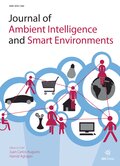Authors: Khalfi, Mohammed Fethi | Tabbiche, Mohammed Nadjib | Adjoudj, Reda
Article Type:
Research Article
Abstract:
Since its introduction by Mark Weiser, ubiquitous computing has received increased interest in the dawn of technological advancement. Supported by wireless technology advancement, embedded systems, miniaturization, and the integration of various intelligent and communicative devise, context-aware ubiquitous applications actively and intelligently use rich contextual information to assist their users. However, their designs are subject to continuous changes imposed by external factors. Nowadays, software engineering, particularly in the fields of Model-Driven Engineering, displays a strong tendency towards developing applications for pervasive computing. This trend is also fueled by the rise of generative artificial intelligence, paving the way for a new generation
…of no-code development tools and models specifically trained on open-source code repositories to generate applications from their descriptions. The specificities of our approach lies in starting with a graphical model expressed using a domain-specific language (DSL) composed of symbols and formal notations. This allows for graphically instantiating and editing applications, guiding and assisting experts from various engineering fields in defining ubiquitous applications that are eventually transformed into peculiar models. We believe that creating intelligent models is the best way to promote software development efficiency. We have used and evaluated recurrent neural networks, leveraging the recurrence of processing the same contextual information collected within this model, and enabling iterative adaptation to future evolutions in ubiquitous systems. We propose a prototype instantiated by our meta-model which tracks the movements of individuals who were positive for COVID-19 and confirmed to be contagious. Different deep learning models and classical machine learning techniques are considered and compared for the task of detection/classification of COVID-19. Results obtained from all techniques were evaluated with confusion matrices, accuracy, precision, recall and F1-score. In summary, most of the results are very impressive. Our deep learning approach used a RNN architecture produced up to 92.1% accuracy. With the recent development of OpenAI Codex, optimized for programming languages, we provided the same requirements to the Codex model and asked it to generate the source code for the COVID-19 application, comparing it with the application generated by our workshop.
Show more
Keywords: Ubiquitous systems, model-driven engineering, MDE, graphics editors, COVID-19, domain-specific language, concrete syntax, deep learning, ChatGPT, GPT-4, Codex, OpenAI, playground, recurrent neural networks
DOI: 10.3233/AIS-220355
Citation: Journal of Ambient Intelligence and Smart Environments,
vol. 16, no. 1, pp. 111-149, 2024
Price: EUR 27.50





